How Does Grubhub Data Scraping Provide Insights Into Menus, Customer Reviews, and Delivery Trends?
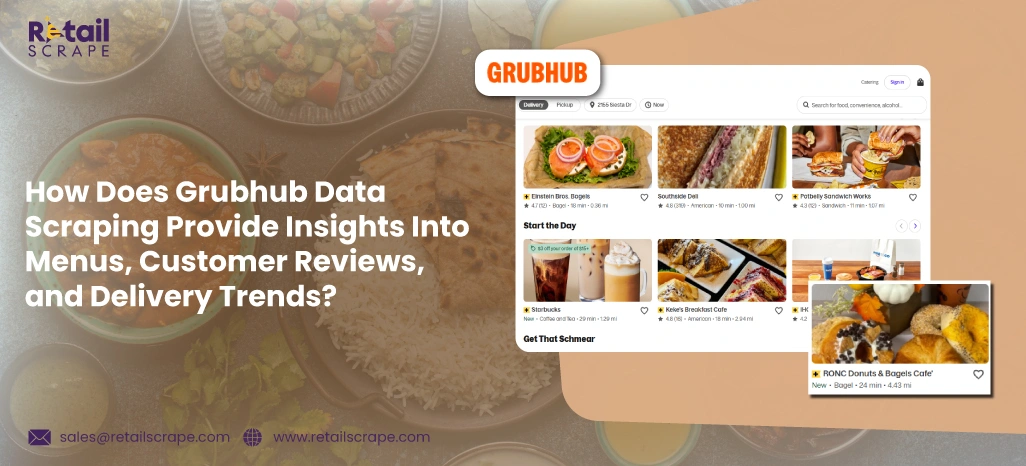
Introduction
In today’s competitive food delivery market, businesses must rely on accurate insights to make data-driven decisions. Grubhub Data Scraping provides an advanced method for capturing valuable restaurant information, menu details, customer sentiment, and delivery performance patterns. By collecting structured information, businesses can compare prices, study evolving consumer demands, and identify which restaurants are excelling or struggling in their offerings.
Restaurants often face challenges in maintaining competitive menus, adapting pricing strategies, and improving customer experiences. Without real-time data, decision-making can become a matter of guesswork, leading to missed opportunities and declining margins. By analyzing menus, reviews, and delivery metrics through automated scraping, businesses can enhance operational efficiency and refine marketing approaches.
A detailed examination of customer reviews, delivery timelines, and restaurant listings enables both food businesses and analysts to uncover actionable patterns. By leveraging structured approaches to data and the ability to Scrape Grubhub Restaurant Data, companies can transform raw information into meaningful insights that drive more substantial competitive advantages.
Improving Restaurant Menus with Data-Driven Insights
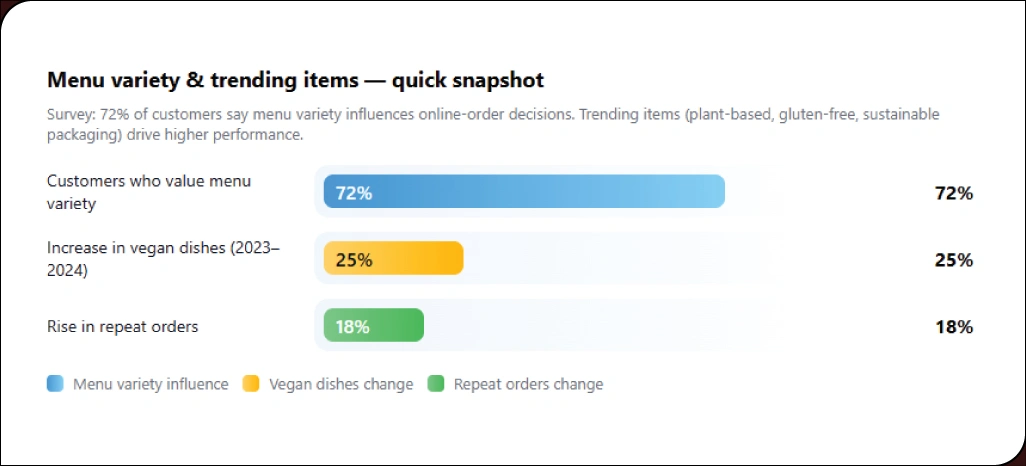
Menus remain at the heart of customer choice in food delivery services. With Grubhub Menu Data Scraping, businesses can track menu updates, pricing structures, and trending food categories across thousands of restaurants. The ability to compare offerings at scale helps restaurants identify customer preferences and make timely adjustments.
Recent surveys indicate that 72% of customers consider menu variety a key factor in deciding whether to place an online order. Restaurants adopting trending items—such as plant-based dishes, gluten-free meals, or sustainable packaging options—tend to outperform those with static offerings. For instance, in 2023–2024, vegan dishes increased by 25% across top U.S. cities, resulting in an 18% rise in repeat orders.
| Year | Vegan Menu Options (%) | Customer Retention (%) |
|---|---|---|
| 2023 | 12% | 68% |
| 2024 | 25% | 79% |
Using Customer Feedback Insights to Improve Services
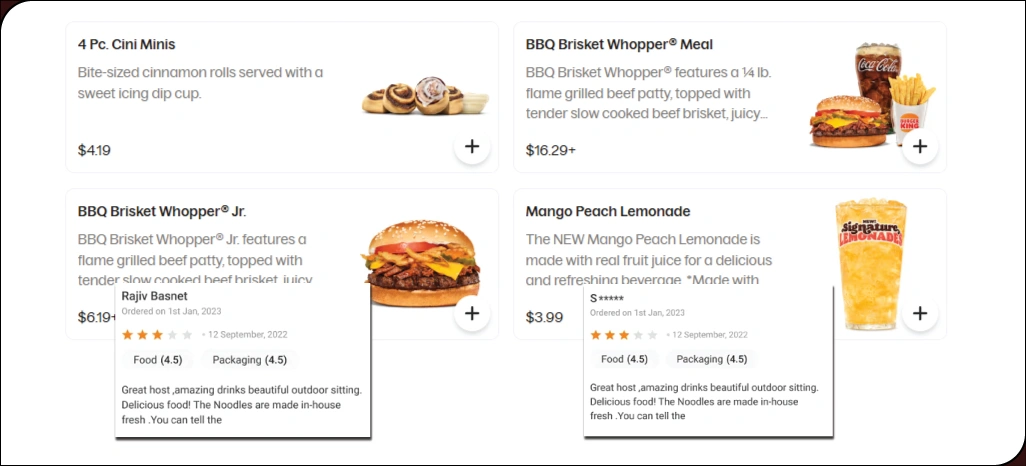
Customer voices directly shape brand reputation and service outcomes. With Grubhub Reviews Scraping, businesses can collect thousands of structured reviews that reveal recurring themes such as food quality, delivery punctuality, or packaging concerns. These insights are crucial because 87% of customers read reviews before making online food purchases.
Sentiment analysis of reviews highlights which areas restaurants need to improve. Locations with delivery delays of 25 minutes or less have shown a 30% higher favorable review ratio compared to those with delays of 40 minutes or more. Integrating Food Data Scraping enables large-scale analysis, identifying both service excellence and common problem areas.
| Delivery Time | Positive Review Ratio | Negative Review Ratio |
|---|---|---|
| Under 25 min | 78% | 22% |
| Over 40 min | 54% | 46% |
Restaurants can utilize these insights to optimize workforce planning, enhance packaging methods, or refine customer communication strategies. This ensures better customer satisfaction and loyalty in a highly competitive market.
Strengthening Delivery Operations Through Performance Data Insights
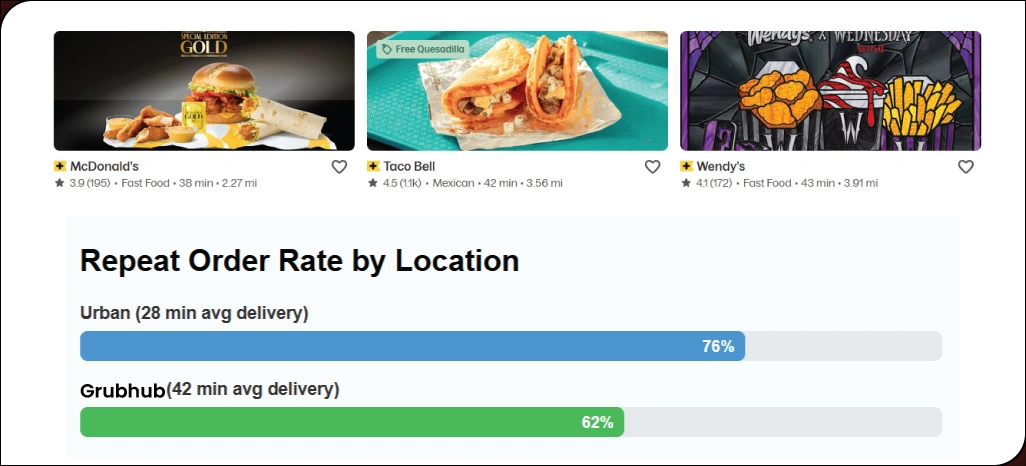
Delivery speed is one of the most critical performance metrics for food platforms. Using Grubhub Delivery Data Scraping, businesses can capture data on delivery routes, completion times, and delays. Faster deliveries not only boost customer satisfaction but also directly influence repeat orders.
For example, data shows that restaurants with an average delivery time of 30 minutes experience 18% more repeat orders compared to those with an average delivery time of 45 minutes. Regional data also highlights varying customer expectations: urban customers demand faster service, while suburban areas tend to allow slightly longer times.
| Location Type | Avg Delivery Time | Repeat Order Rate |
|---|---|---|
| Urban | 28 min | 76% |
| Suburban | 42 min | 62% |
Delivery insights also uncover opportunities for resource optimization—such as assigning peak-hour drivers to high-demand zones or adopting predictive scheduling. These practices help ensure smoother logistics and lower operational costs. By leveraging structured delivery performance data, businesses can align operations with customer expectations and improve long-term service reliability.
Using Restaurant Listings to Identify Competitive Positioning

Understanding competitor presence is key to market growth. Businesses can scrape to Extract Grubhub Restaurant Listings to study coverage density, cuisine availability, and regional distribution. In competitive markets, tracking which restaurants are most active during peak hours offers insights into consumer demand and operator strategies.
For example, in Chicago, data revealed that 42% of restaurants updated availability during peak dinner hours. This directly improved visibility and boosted order volumes. By integrating Grubhub Datasets, businesses can track these shifts over time and evaluate performance against market benchmarks.
| City | Restaurants Listed | Peak Hour Updates (%) |
|---|---|---|
| Chicago | 3,200 | 42% |
| Boston | 2,400 | 36% |
Such insights enable restaurants to assess market saturation, identify underserved cuisines, and plan for expansion in locations where customer demand exceeds supply. Monitoring listings provides a competitive advantage in capturing market share efficiently.
Understanding Restaurant Pricing Models Through Data Scraping

Pricing has a direct impact on purchasing behavior in online food delivery. With Grubhub Restaurant Pricing Scraping, businesses can analyze cost differences across restaurants and track promotional discounts. Transparent pricing fosters customer trust, while discounts lead to measurable spikes in order volume.
Monitoring competitor pricing patterns enables restaurants to adjust their strategies in real-time, ensuring they remain competitive. With structured pricing data, businesses can design promotional campaigns, loyalty discounts, and location-specific offers that directly improve customer satisfaction and profitability.
| Discount Applied | Avg Order Volume Increase | Customer Retention (%) |
|---|---|---|
| 10–15% | 22% | 74% |
| None | 0% | 61% |
Monitoring competitor pricing patterns enables restaurants to adjust their strategies in real-time, ensuring they remain competitive. With structured pricing data, businesses can design promotional campaigns, loyalty discounts, and location-specific offers that directly improve customer satisfaction and profitability.
Building Stronger Strategies with Multiple Delivery Insights
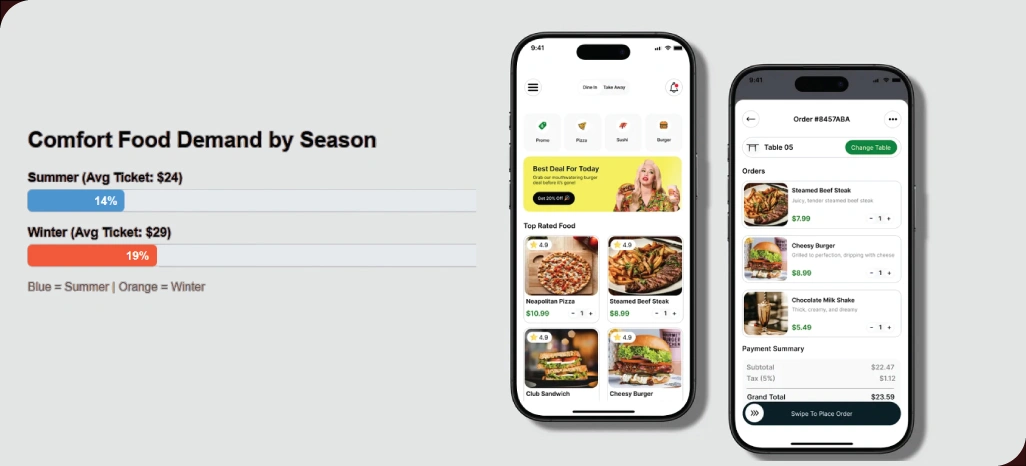
Comprehensive data collection allows businesses to refine their strategies across multiple dimensions. With Grubhub Food Delivery Data Extraction, companies can analyze operational efficiency, customer satisfaction, and delivery metrics within a single framework. A Web Scraper for Grubhub Menus can further scale insights by comparing menu trends across cities and cuisines.
Structured insights also stem from the Grubhub Consumer Reviews Dataset, which highlights service consistency, and the Grubhub Delivery Trends Data, which reveals seasonal demand shifts. For instance, demand for comfort food rises by nearly 19% in winter compared to summer.
| Season | Comfort Food Demand | Average Ticket Size |
|---|---|---|
| Summer | 14% | $24 |
| Winter | 19% | $29 |
Businesses utilizing such structured intelligence can plan seasonal promotions, enhance menu relevance, and optimize resource allocation. Partnering with reliable Web Scraping Services ensures scalable, compliant, and automated extraction of critical data. This creates a strong foundation for long-term operational efficiency and sustainable growth.
How Retail Scrape Can Help You?
We specialize in delivering accurate Grubhub Data Scraping solutions designed to enhance restaurant, menu, and delivery insights. By offering customized scraping services, we ensure businesses have access to reliable and structured data that supports informed decision-making.
Our solutions empower businesses through:
- Access to real-time restaurant performance data.
- Better visibility into menu innovations.
- Monitoring of delivery timelines and efficiency.
- Insights into competitive restaurant pricing.
- Consumer review analysis for quality improvements.
- Location-based tracking for market expansion.
Whether you need restaurant listings, delivery insights, or review datasets, our tailored approach ensures scalability and compliance. With our proven expertise in Grubhub Restaurant Pricing Scraping, we provide businesses with powerful tools to transform raw data into actionable insights.
Conclusion
In today’s competitive food delivery marketplace, Grubhub Data Scraping enables businesses to strengthen strategies by analyzing menus, customer reviews, pricing, and delivery operations. Structured data ensures accuracy in decision-making while supporting growth opportunities.
By combining multiple datasets—from reviews to delivery performance—businesses can rely on structured information to optimize customer satisfaction and operational efficiency. Professional Food Data Scraping solutions further enhance insights, ensuring restaurants and analysts benefit from actionable intelligence.
Ready to improve your food delivery strategies with actionable insights? Contact Retail Scrape today to get started!
